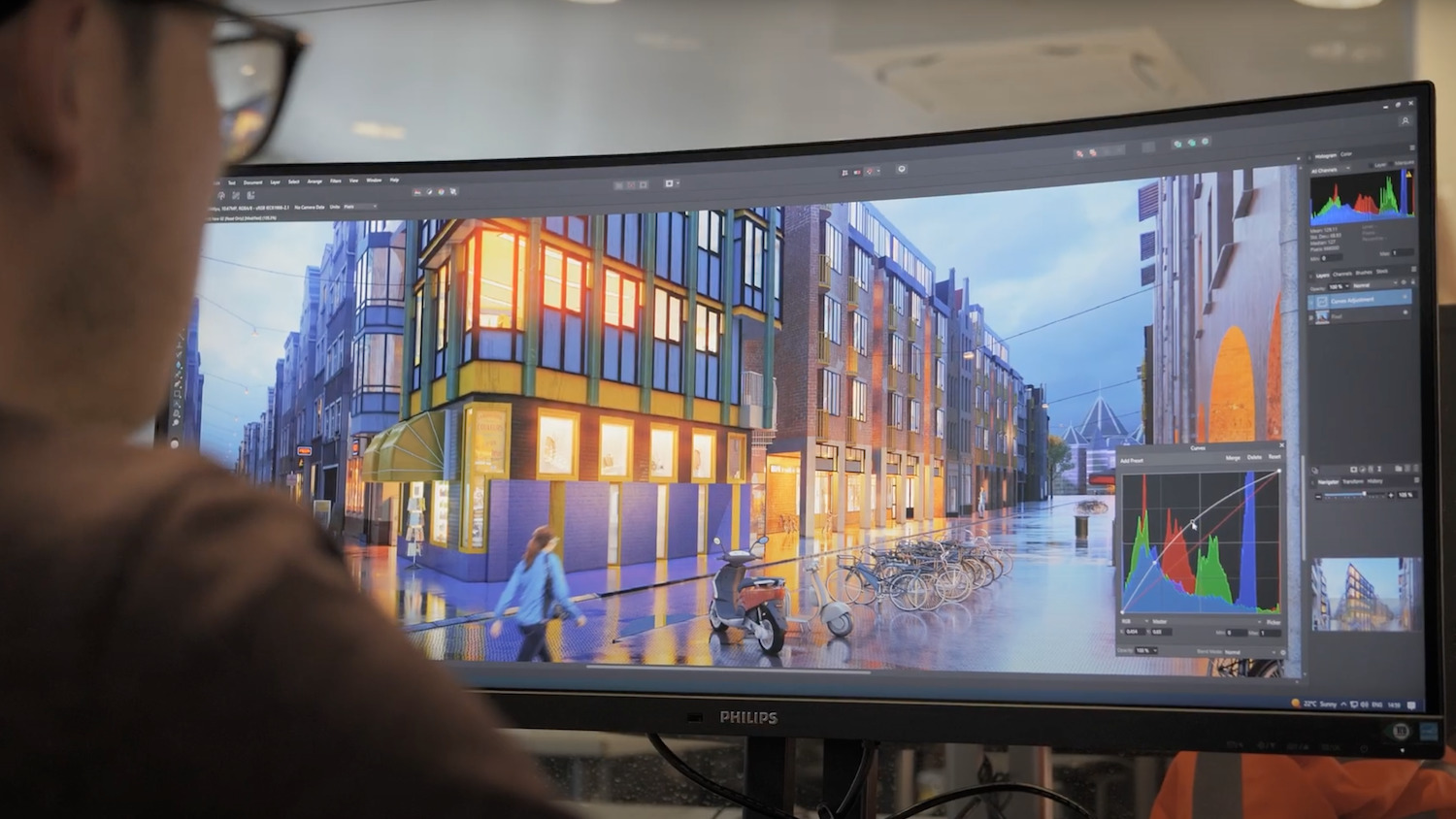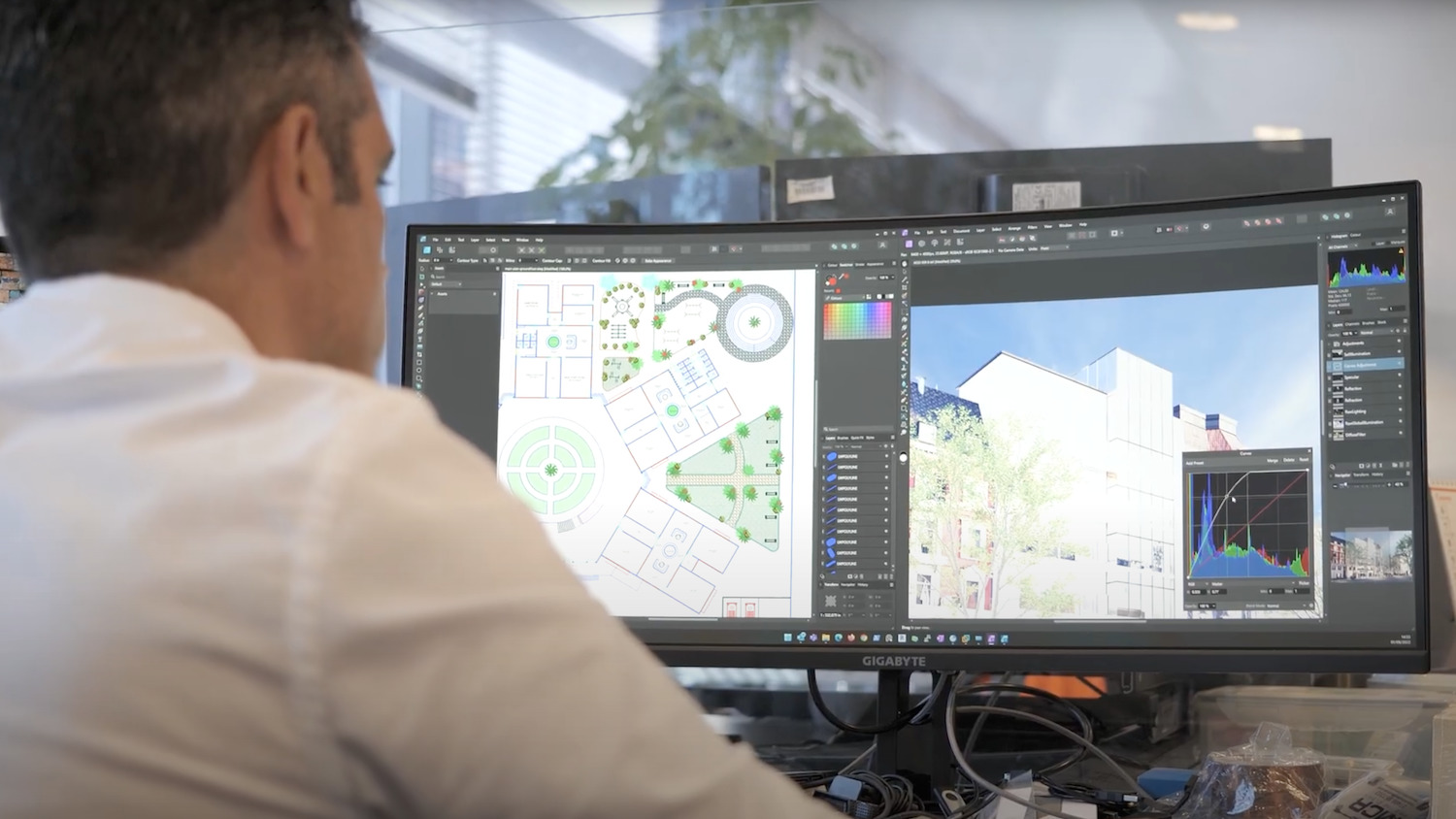
How do architects feel about AI? How are they using it and how will they use it in the future? And how should academia address AI in architecture education?
These were some of the questions posed to architects and architecture professors by Serif, the developer of the Affinity design software suite.
In the recently-published report, The Rise of AI, Affinity interviewed:
- Jack Cole, head of automation and computational design at Stephen George + Partners LLP in London;
- Dave Moyes, partner at SimpsonHaugh;
- Emily Glynn and Mansel Haynes, founders of Archisource;
- Professor Wassim Jabi B.Arch M.Arch PhD, chair in computational methods in architecture and a professor at Cardiff University; and
- Sarah Davidson, associate professor and director of education and student experience at the University of Nottingham’s Faculty of Engineering.
How might AI change architectural workflows?
Jack Cole: There are so many different applications for AI, but where I see it adding value at the moment is in automating the routine tasks – data entry, uploading documents and writing design and access statements for planning applications. This would give architects more time to focus on the more enjoyable aspects of the job.
The challenge for academia – part 1
Prof Wassim Jabi: AI seems to be an area of interest for individual educators who are trying to learn about it and teach it to their students. While there are many debates and discussions on AI in research and conferences, there are very few AI-focused educational programmes (that I know of). I suspect this will change in the next academic cycle.
In simple and ethical terms, the main priorities are authenticity and attribution, as well as being transparent about the origin of any design. Architectural consideration is also paramount – including safety, structure, daylight, spatiality and so on.
I have also seen some people using AI to ‘greenwash’ their designs – for example, using images of trees intertwined with the structure of the building to promote their eco-friendliness. Companies may use generative image-based technology to appear eco-friendly without actually making meaningful efforts towards sustainability.
At Cardiff University, we are redesigning our undergraduate curriculum to include a focus on ethics. Our priority is to equip students with a strong ethical ethos that can effectively address the rapid emergence of new AI technologies. This includes both the use of AI-generated architectural designs, possible bias in dataset and processes, and also written work produced by AI platforms like ChatGPT.
AI is already being used to create renders and visualisation work. The photo-realistic visuals being generated by current text-to-image software means it isn’t a great leap to see how AI could be applied to speed up this process. Renders are vital for architects to critique their design ideas. AI could help identify issues or opportunities that humans miss, such as ways to improve the environmental credentials of a building, as well as speed up the process.
In certain sectors, such as industrial and logistics, AI can analyse data on storage requirements, and material flow patterns to optimise the layout and design of logistics buildings, and help architects design logistics buildings that maximise space utilisation and operational efficiency.
At the same time, it can assist architects in selecting the most suitable materials for logistics buildings based on factors such as durability, sustainability, and cost-effectiveness.
It could also perform lifecycle analysis to evaluate the environmental impact of different material choices, helping architects design logistics buildings that are environmentally sustainable and compliant with green building standards.
Dave Moyes: There are many who feel that AI is focusing on the wrong areas of architecture at the moment. It’s looking at the whistles and bells rather than the day-to-day tasks an architect performs that could be simplified. For example, data visualisation for room areas, programming, alerts about legislation changes, etc.
It seems that there is a greater emphasis on the visual aspects and not so much on the ‘grunge’ elements.
How else might AI impact architects and their future?
Emily Glynn and Mansel Haynes: AI may be the answer we’ve been waiting for – a means to overcome the pressures of time and budget constraints, design expectations and resource pressures.
With the future power of AI, it could potentially amplify the work of one architect into the power of three and allow us to iterate like never before. AI may even give individuals the courage to start their own studios with a plethora of tools and abilities behind them as if they were a team.
We can definitely see a wave of new opportunities on the horizon; those that adapt and utilise these new tools will likely only empower themselves moving forwards.
Dave Moyes: AI could revolutionise the industry in the same way the PC did. Many of the challenges will be cultural rather than technological. Younger practices might be able to change and adapt to the use of AI quicker than the older practices which may be too ingrained in their current working methods to adapt.
The challenge for academia – part 2
Sarah Davidson: When it comes to training the next generation of architects, universities will need to increase their focus on digital literacy.
While digital literacy has been part of the curriculum for some time, assessments and methodologies now have to be developed to accommodate AI to ensure students gain the knowledge and skills employers expect of graduates.
AI can certainly help expedite the design process, especially during the initial phases, supporting tasks such as master planning, larger scale urban planning, and faster testing of infrastructure routes, utility services routes and traffic and pedestrian volumes.
However, it’s important for architects to continue analysing and applying professional judgement throughout the entire process – ensuring their design is technically feasible, economically viable, and environmentally sustainable for its entire lifetime.
The ability to stay agile will become more critical as the pace of technology and expectations about its use quicken.
However, some [AI impacts] will be subtle and go almost unnoticed. For example, documents and communications with the design team and clients could be automatically logged and associated with the correct projects. Better access to information should enable better design decisions to be made based on the most up-to-date information available.
This may involve developing or strengthening new skills around being able to filter the vast quantities of information available in order to pick out what is relevant at that moment in time. Clients and developers might expect shorter timescales for the design phase – in reality, they may not get any shorter. However, the quality and quantity of design information should improve.
AI presents a significant opportunity for the profession to evolve.
There are of course a wide number of concerns around what the expectations and realities of these changes are. How will client and social expectations develop? What happens with the forms of contract and fee structures, and what will be the effect on human resources to deliver a project – not just architectural resources, but also the larger support team aiding in the delivery?

Human USP?
The last word goes to Ashley Hewson, chief executive of Serif. He said: “Whatever happens next, AI could fundamentally change what it means to be an architect. We’re likely to see a divide between firms that lean more heavily on it and those that play on their ‘human USPs’ in the same way that food manufacturers might trade on their ‘organic’ or ‘local’ credentials. There may be room in the market for both – it depends on what your clients value.”
Don’t miss out on BIM and digital construction news: sign up to receive the BIMplus newsletter.














